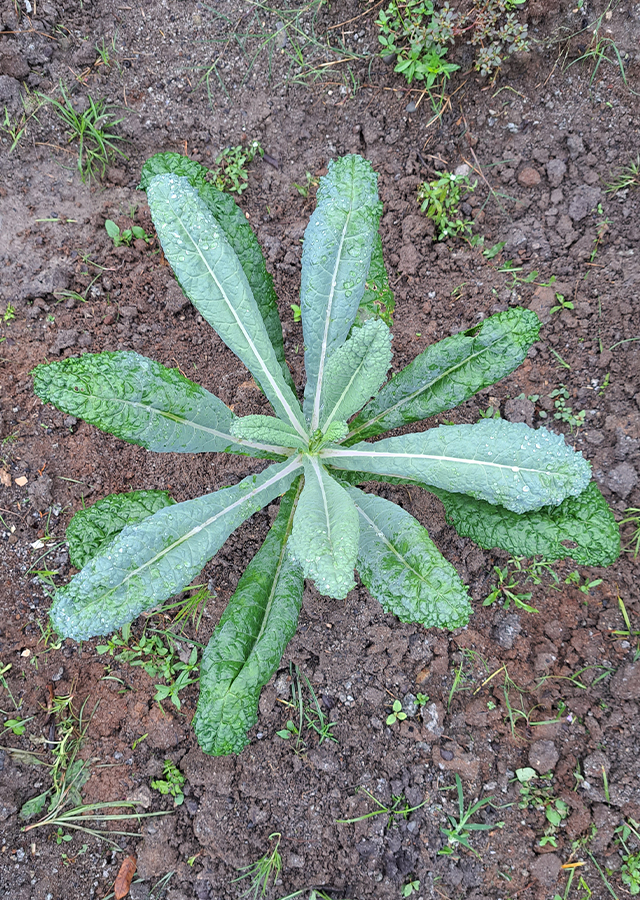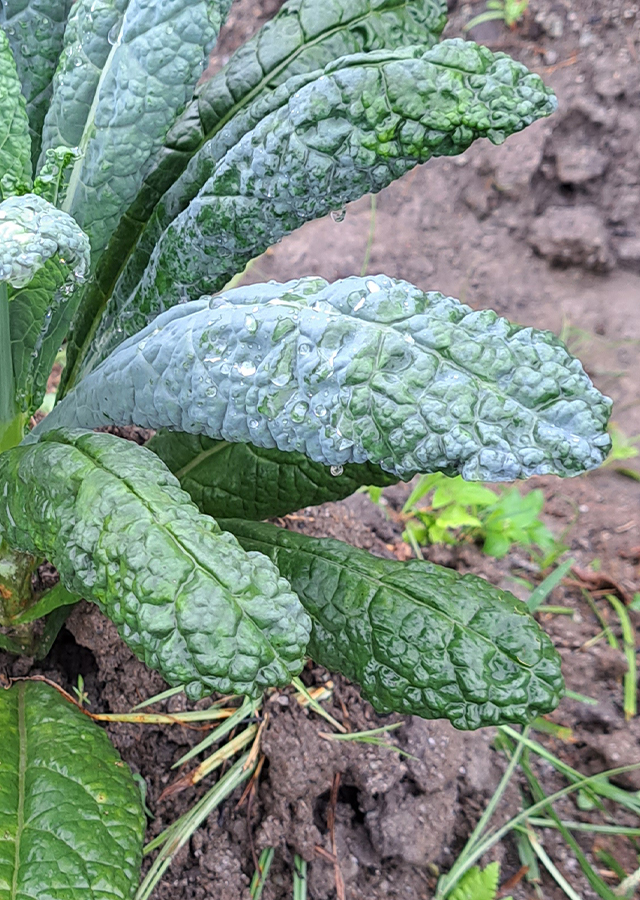Traditional Herbs from Brassica oleracea var. palmifolia
cleaning_the_infected_wound
- Take the lacinato kale leaves, wash them thoroughly then drain them.
- Remove the ribs and iron them.
- Put the leaves on the affected part while they are still hot.
What is Brassica oleracea var. palmifolia Looks like??



Parts of Brassica oleracea var. palmifolia that could be used
- Leaf
Brassica oleracea var. palmifolia Distribution
Lacinato kale has been grown in Tuscany for centuries from the 18th century. This plant is sometimes cultivated for its leaves as a vegetable. Lacinato kale is usually boiled first, then saut�ed with other aromatic ingredients such as anchovies. Usually used in pasta and soups, but can also be eaten raw, in salads. In Tuscan cuisine, lacinato kale is often used in ribollita (literally: "reboiled"), a thick, hearty soup made from ingredients cooked for the meal the day before. Because the stems are straight and slender, this plant is also used to make walking sticks. Kale also contains many nutrients that are good for the health of the human body.Agroecology of Brassica oleracea var. palmifolia
Suitable for planting on light (sandy), medium (clay) and heavy (clay) soil, prefers well-drained soil and can grow in heavy clay soil. Suitable soil pH ranges from slightly acidic, neutral and alkaline (slightly alkaline) and can grow in very acidic and very alkaline soil (4.3-8.3). Likes moist soil and can grow in semi-shade (light forest) or without shade. This plant can tolerate marine exposure.
Morphology of Brassica oleracea var. palmifolia
- Taproot.
- Woody, fibrous, unbranched stem topped with a rosette of leaves.
- Leaves are green and sword-shaped (elongated in shape). The edges of the leaves are wavy. The surface of the leaves is shiny. Has a sweet, savory taste, and delicious. The wavy texture of the leaves gives a crunchy and delicious effect when chewed.
Cultivation of Brassica oleracea var. palmifolia
Propagation is done generatively using seeds. Seeds are sown first in the nursery, after growing for approximately 2 weeks the plants can be moved to the field.
Brassica oleracea var. palmifolia, more details :
Chemical Content of Brassica oleracea var. palmifoliaGlucoraphanin, sinigrin, gluconapin, gluconasturtiin, glucoerucin, glucobrasscin, and 4-methoxylglucobrassicin.
Benefits of Brassica oleracea var. palmifolia
Increases immunity, treats flu, tired eyes, Alzheimer's, relieves joint pain, overcomes obesity, cleans infected wounds. Has activity as an antioxidant and analgesic.
Simplisia of Brassica oleracea var. palmifolia
Another Facts for Brassica oleracea var. palmifolia :
Synonym of Brassica oleracea var. palmifolia-
Habitus of Brassica oleracea var. palmifolia
Herb. Biennial or annual herb, 3-5 m high
Habitat of Brassica oleracea var. palmifolia
- Mainland
No comments:
Post a Comment